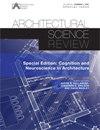How urban wellbeing is influenced by spatial urban parameters (density, morphology, vegetation & commerce), as examined in a VR framework
IF 1.8
3区 艺术学
0 ARCHITECTURE
引用次数: 1
Abstract
Urban environments face the serious challenge of complying with relatively tight constraints regarding land and tenant density. In fact, this has become a key constraint in both current and future urban designs. Moreover, wellbeing is strongly influenced by urban planning and design decisions. The objective of this study was to examine the effect of spatial parameters on the wellbeing of potential dwellers through VR experiments. The research incorporated two experiments that were conducted in a VR laboratory, by manipulating virtual twins of an existing urban environment. The first experiment focused on increased density levels combined with commerce and vegetation, while the second one focused on variant morphologies within a fixed density level. The results indicate that morphology, density, vegetation, and commercial activity have a significant impact on people’s wellbeing. The findings of this research emphasize certain design principles that could improve urban designs that are part of densification processes.VR框架中研究的城市幸福感如何受到城市空间参数(密度、形态、植被和商业)的影响
城市环境面临着严峻的挑战,要遵守相对严格的土地和租户密度限制。事实上,这已经成为当前和未来城市设计的关键制约因素。此外,幸福感受到城市规划和设计决策的强烈影响。本研究的目的是通过虚拟现实实验来研究空间参数对潜在居住者幸福感的影响。该研究结合了在虚拟现实实验室进行的两项实验,通过操纵现有城市环境的虚拟双胞胎。第一个实验集中在增加的密度水平与商业和植被相结合,而第二个实验集中在固定密度水平下的变异形态。结果表明,地貌、密度、植被和商业活动对人们的幸福感有显著影响。这项研究的结果强调了某些设计原则,这些原则可以改善城市设计,这是致密化过程的一部分。
本文章由计算机程序翻译,如有差异,请以英文原文为准。
求助全文
约1分钟内获得全文
求助全文
来源期刊

Architectural Science Review
ARCHITECTURE-
CiteScore
4.80
自引率
8.70%
发文量
34
期刊介绍:
Founded at the University of Sydney in 1958 by Professor Henry Cowan to promote continued professional development, Architectural Science Review presents a balanced collection of papers on a wide range of topics. From its first issue over 50 years ago the journal documents the profession’s interest in environmental issues, covering topics such as thermal comfort, lighting, and sustainable architecture, contributing to this extensive field of knowledge by seeking papers from a broad geographical area. The journal is supported by an international editorial advisory board of the leading international academics and its reputation has increased globally with individual and institutional subscribers and contributors from around the world. As a result, Architectural Science Review continues to be recognised as not only one of the first, but the leading journal devoted to architectural science, technology and the built environment. Architectural Science Review publishes original research papers, shorter research notes, and abstracts of PhD dissertations and theses in all areas of architectural science including: -building science and technology -environmental sustainability -structures and materials -audio and acoustics -illumination -thermal systems -building physics -building services -building climatology -building economics -ergonomics -history and theory of architectural science -the social sciences of architecture
 求助内容:
求助内容: 应助结果提醒方式:
应助结果提醒方式:


